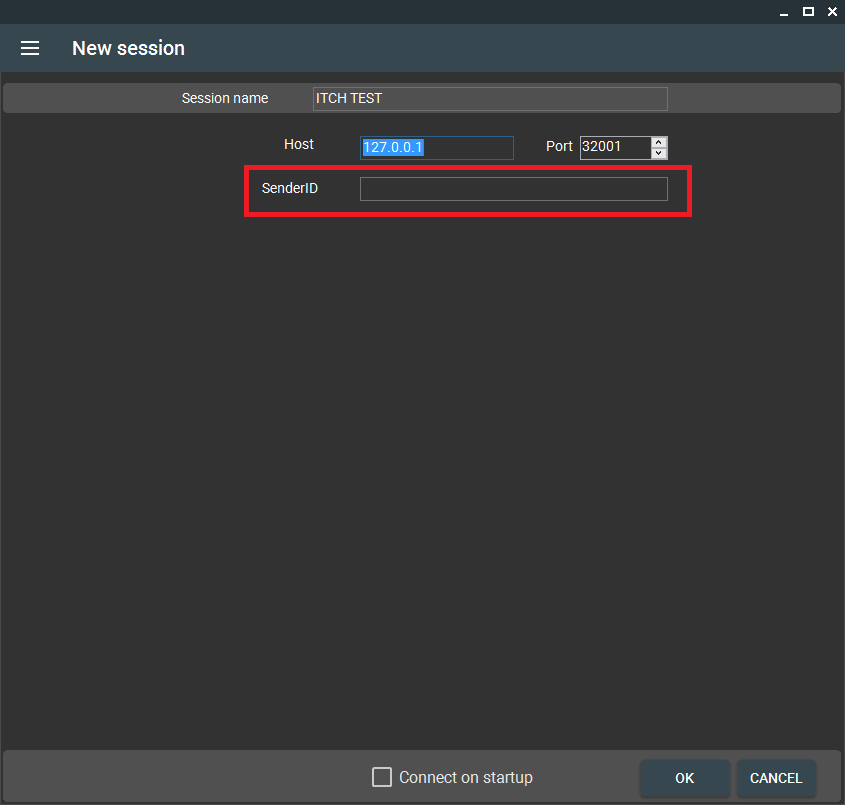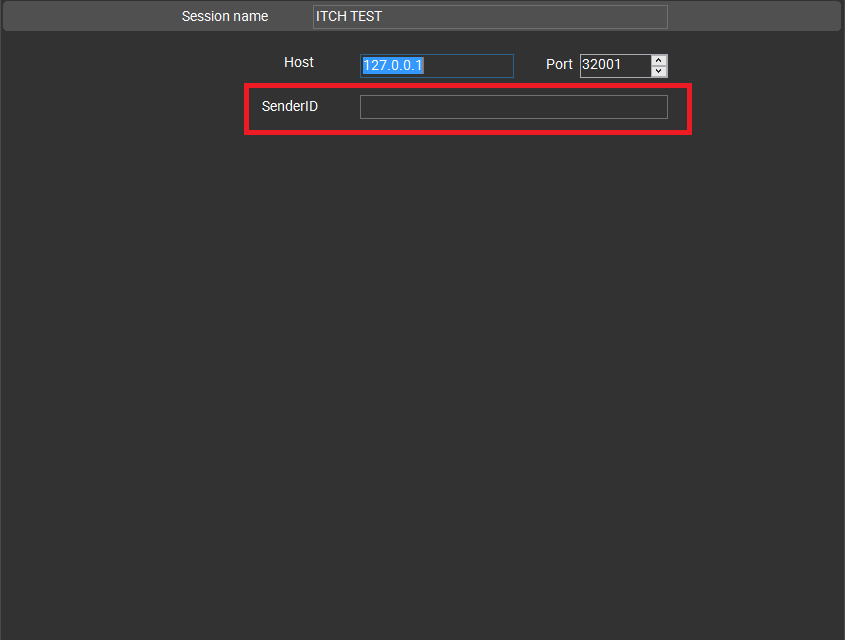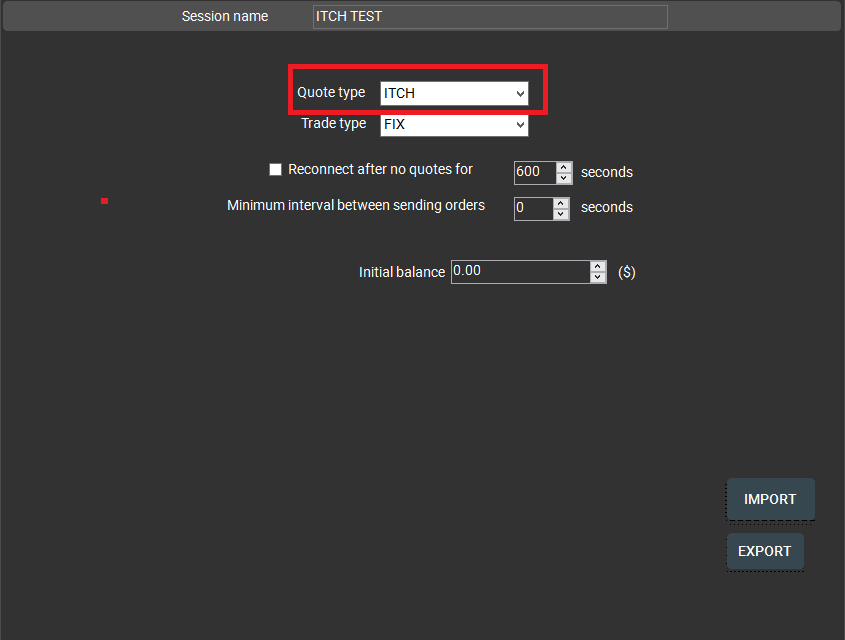Geschwindigkeit und Flexibilität im Duell: ITCH-Protokoll vs. FIX API bei der Übertragung von Finanzdaten Mittwoch, der 31. Januar 2024 – Posted in: Arbitrage Software, cryptoarbitrage software, Forex trading
Einführung
Verschiedene Protokolle im Forex (Devisen) Markt ermöglichen eine effiziente, sichere und Echtzeit-Elektronikkommunikation zwischen den Teilnehmern. Diese Protokolle sind entscheidend für die Ausführung von Handelsgeschäften, die Übermittlung von Marktdaten und die Verwaltung von Kundeninteraktionen. Hier ein detaillierter Blick auf einige der Schlüsselprotokolle, die im Forex-Handel verwendet werden:
FIX (Financial Information eXchange) Protokoll
- Zweck: FIX ist ein weit verbreitetes elektronisches Kommunikationsprotokoll für den internationalen Echtzeitaustausch von Informationen, die mit den Finanzmärkten zusammenhängen, hauptsächlich für die Ausführung von Handelsgeschäften.
- Funktionalität: Es ermöglicht die Übertragung von Finanzinformationen, einschließlich Handelsaufträgen, Ausführungsberichten, Marktdaten und anderen handelsbezogenen Nachrichten.
- Vorteile: Das FIX-Protokoll ist bekannt für seine Flexibilität, Zuverlässigkeit und weite Verbreitung, was es zu einem Standard in der Branche für handelsbezogene Kommunikation macht.
APIs (Application Programming Interfaces)
- Zweck: APIs verbinden direkt die Algorithmen der Händler, Handelsplattformen oder Drittanbieteranwendungen mit dem Handelssystem eines Brokers.
- Typen: REST-APIs und WebSocket-APIs werden häufig im Forex-Handel verwendet.
- REST-APIs werden für die Ausführung von Handelsgeschäften, den Zugriff auf Kontodaten und das Abrufen historischer Marktdaten verwendet, während WebSocket-APIs für den Echtzeit-Streaming von Marktdaten verwendet werden.
- Vorteile: APIs ermöglichen benutzerdefinierte Handelslösungen, algorithmischen Handel und Hochfrequenzhandel, indem sie direkten und flexiblen Zugang zum Handelssystem des Brokers bieten.
ITCH-Protokoll
- Zweck: ITCH wird hauptsächlich für die Übertragung von Marktdatenfeeds verwendet und bietet Echtzeit-Marktinformationen wie Orderbuchaktualisierungen und Handelsgeschäfte.
- Funktionalität: Es bietet Händlern einen direkten Datenfeed von Börsen und anderen Marktveranstaltungsorten und gibt ihnen Echtzeit-Updates.
- Vorteile: ITCH ist besonders wertvoll im Hochfrequenzhandel aufgrund seiner Geschwindigkeit und Effizienz bei der Lieferung von Marktdaten.
Forex (Devisen) Marktprotokolle
- Zweck: STP ermöglicht die automatische Verarbeitung von Handelsgeschäften ohne manuelle Eingriffe, direkt von der Plattform des Händlers zum Ausführungsort des Brokers.
- Funktionalität: Es erleichtert die nahtlose Ausführung von Aufträgen und reduziert Verzögerungen und Fehler bei der Verarbeitung von Handelsgeschäften.
- Vorteile: STP verbessert die Handelsgeschwindigkeit und Effizienz, was im schnelllebigen Forex-Markt entscheidend ist.
SWIFT (Society for Worldwide Interbank Financial Telecommunication)
- Zweck: SWIFT wird zwar nicht per se als Handelsprotokoll verwendet, ist aber für internationale Geldüberweisungen und die Abwicklung von Handelsgeschäften von Bedeutung.
- Funktionalität: Es bietet ein Netzwerk für Finanzinstitutionen, um Informationen über Finanztransaktionen in einer sicheren, standardisierten und zuverlässigen Umgebung zu senden und zu empfangen.
- Vorteile: SWIFT ist entscheidend für den Abwicklungsaspekt des Forex-Handels und gewährleistet sichere und zuverlässige internationale Finanztransaktionen.Diese Protokolle dienen spezifischen Funktionen im Ökosystem des Forex-Handels, von der Ausführung von Handelsgeschäften bis hin zur Datenübertragung und Abwicklung. Die Wahl des Protokolls hängt oft von den spezifischen Anforderungen der Handelsaktivität ab, wie Geschwindigkeit, Flexibilität, Art des Handels (manuell vs. algorithmisch) und Zugangsniveau zu Marktdaten und Ausführungsorten.
FIX Protokoll – detaillierte Erklärung
The Financial Information eXchange (FIX) protocol is a widely used electronic communication protocol for international real-time exchange of information related to securities transactions and markets. Here is a detailed overview of how data transmission occurs using the FIX protocol:
Connection Establishment
The first step in data transmission using the FIX protocol involves establishing a network connection between two parties, typically a client (such as an investor or trader) and a server (such as a broker or exchange).
The client usually initiates this connection by sending a logon message to the server. The logon message includes details like the FIX protocol version being used, a unique sender ID, a target ID, and other parameters necessary for establishing the session.
Session Management
Once the connection is established, session management begins. This includes the exchange of heartbeats (simple messages sent at regular intervals) to ensure the connection remains active and to monitor the status of the link.
The FIX protocol is a session layer that ensures a reliable, ordered, and secure message exchange. It handles sequence numbers for messages to ensure they are processed in the correct order and identifies any gaps in message sequences.
Message Formatting
FIX protocol communicates through a series of standardized messages. Each message comprises a sequence of tagged data elements, each representing a specific piece of information (such as price, quantity, etc.).
The messages are constructed in a specific format, typically starting with the standard header (containing fields like message type, sender, and receiver information), followed by the body (which contains the transaction details), and ending with the standard trailer (which includes security and integrity checks, like checksum).
Types of Messages
The FIX protocol defines a wide range of message types to facilitate various aspects of trading communication. These include order submissions, modifications, cancellations, status requests, execution reports, and market data inquiries.
Each message type has a specific format and contains relevant fields. For instance, an order submission message will include details such as order type, quantity, price, and financial instrument.
Data Transmission and Processing
Once a message is formatted, it is transmitted over the network from the sender to the receiver.
Upon receipt, the message is processed by the receiving party’s FIX engine. This involves parsing the message, validating it, and then taking appropriate action (, executing a trade, updating an order status, etc.).
Session Termination
At the end of the trading session, or when no longer needed, the session is terminated using a logout message.
The logout process involves the exchange of logout messages between the client and server, followed by the closure of the network connection.
Throughout this process, the FIX protocol ensures data transmission’s security, reliability, and integrity. Its robustness and adaptability make it a cornerstone of modern electronic trading systems, allowing for efficient and standardized communication in the fast-paced world of finance.
ITCH Protocol detailed explanation
The ITCH protocol, primarily used to transmit market data in financial trading environments, is a high-speed, direct data-feed protocol designed to provide real-time information about market events. Here’s a detailed overview of data transmission using the ITCH protocol.
Connection Establishment
The ITCH protocol typically operates over a network connection, often a high-speed multicast network, where data is broadcasted from a single source (usually a stock exchange) to many recipients (such as trading firms).
Traders or firms interested in receiving data subscribe to the multicast group associated with the market data feed they are interested in.
Message-Based Communication
The ITCH protocol communicates through a stream of messages. Each message is a discrete packet of data containing information about a specific market event.
These messages are standardized and cover various market events, including but not limited to order additions, deletions, modifications, trades, and cross-trades.
Data Format and Structure
ITCH messages are in a binary format, designed for minimal size and maximum speed, which is crucial for high-frequency trading environments.
Each message begins with a standard header, including information such as message length and type. Following the header, the message body contains the specifics of the market event, such as the stock symbol, price, quantity, etc.
Real-Time Transmission
The ITCH protocol delivers market data in real-time. As market events occur, the exchange generates ITCH messages that are immediately broadcast to the multicast group.
These messages are sent continuously throughout the trading day, providing all subscribed recipients with a real-time market data stream.
Processing ITCH Messages
Specialized trading systems or applications are used to process ITCH messages on the recipient’s end. These systems capture the multicast data stream, parse the ITCH messages, and update the recipient’s view of the market in real-time.
Given the high-speed nature of the data, these systems need to be highly efficient in processing messages to keep up with the data flow.
Sequence and Reliability
The sender sequentially numbers of ITCH messages to help recipients track the data flow and identify potential loss.
ITCH protocol implementations often provide mechanisms for recovering missing data, such as retransmission requests or backup data feeds, in case of missed messages or disconnections.
Session Closure
At the end of the trading day, a session closure message is sent, indicating the end of the market data transmission for that day.
The ITCH protocol’s design focuses on providing fast, efficient, and reliable transmission of market data. Its use is particularly prevalent in high-frequency trading scenarios where traders depend on receiving up-to-the-millisecond information to make rapid trading decisions.
ITCH protocol vs. FIX API protocol
The ITCH and FIX protocols are used in financial markets to communicate between clients (like traders and investors) and servers (like exchanges). Still, they serve different purposes and have distinct characteristics.
ITCH Protocol
- Purpose and Use: The ITCH protocol is primarily used for market data feed transmission. It provides a direct data feed from stock exchanges to the traders, giving them real-time market information such as order book updates, trades, stock directory information, and trading actions.
- Nature of Data: ITCH focuses on delivering market data, offering a snapshot of the current state of the order book for a given security or instrument. This includes information about all active orders, prices, quantities, and other market activities.
- Efficiency and Speed: ITCH is designed for high-speed and low-latency transmission of market data. It’s often used in high-frequency trading (HFT), where receiving real-time market data as quickly as possible is critical.
Protocol Structure: ITCH uses a streamlined, lightweight message format, which contributes to its efficiency and speed. It usually sends data from the server to the client in a one-way stream.
FIX (Financial Information eXchange) Protocol
- Purpose and Use: FIX protocol is a messaging standard developed for the real-time electronic exchange of securities transactions. It is used for various trading activities, including order submission, cancellation, execution reports, and market data requests.
- Nature of Data: FIX is more versatile in the data types and instructions it can handle. It’s used for transmitting trade orders, execution reports, and other trade-related messages rather than just market data.
- Flexibility and Customization: FIX is known for its flexibility; it can be customized to accommodate a wide range of trading scenarios and is used extensively for trading across various asset classes.
- Protocol Structure: FIX has a more complex structure than ITCH. It supports two-way communication and handles a broader array of messages, including both trade orders and market data requests.
In summary, ITCH specializes in the high-speed transmission of market data, making it suitable for applications like HFT, where speed is crucial. Conversely, FIX is a more versatile protocol used for a wide range of trading communications, including order management and execution reporting. Each protocol plays a vital role in electronic trading, catering to different needs within the financial markets.
Enhanced Data Exchange Speed with SharpTrader: Introducing ITCH Protocol Integration
We are excited to announce a significant enhancement to SharpTrader arbitrage platform, our cutting-edge trading platform, designed to maximize data exchange speed, especially for high-frequency and arbitrage trading strategies. Understanding the paramount importance of rapid and efficient data transmission in the dynamic trading world, we have expanded our capabilities beyond the conventional FIX API protocol.

Pic. 1. – Convert all SharpTrader’s quote sessions from EasyFIX to ITCH

Pic.2 – Create new SharpTrader quotes session via ITCH protocol

Pic.3 – ITCH session Host:port
We are proud to introduce the integration of the ITCH Protocol into SharpTrader Arbitrage Platform. This groundbreaking development allows for the transmission of market data through the FIX API and the ITCH Protocol. This dual-protocol approach marks a substantial leap in our commitment to providing you with the utmost trading efficiency.
Why is this important? The ITCH Protocol is renowned for its high-speed data transmission capabilities, making it an ideal choice for strategies that rely on the fastest dissemination of market quotes. By leveraging ITCH Protocol, SharpTrader can offer significantly increased quote transmission speeds. This enhancement is particularly crucial for arbitrage and high-frequency trading strategies, where every millisecond counts.
Moreover, this integration is not just about speed. It also brings about a notable reduction in server resource consumption. With lower resource demands, we ensure a more streamlined and efficient operation of our systems, which translates into a smoother and more reliable trading experience for you.
In conclusion, adding ITCH Protocol to SharpTrader is more than just a technical upgrade – it’s a strategic enhancement to empower your trading strategies. As you continue to navigate the markets, rest assured that you are backed by a platform that’s not only fast but also robust and resource-efficient.
Thank you for choosing us as your trading partner. We look forward to seeing you achieve new heights with these enhanced capabilities.
 English
English 日本語
日本語 العربية
العربية 한국어
한국어 中文
中文





